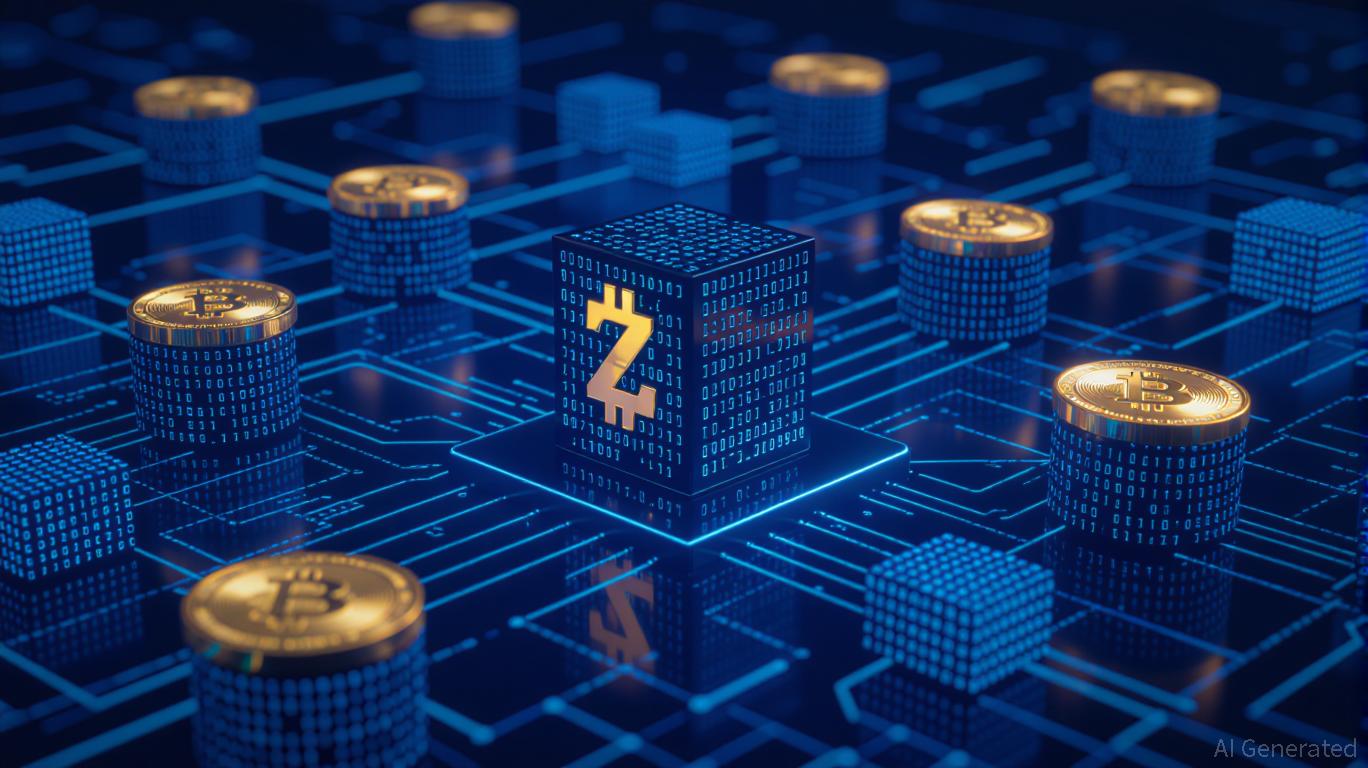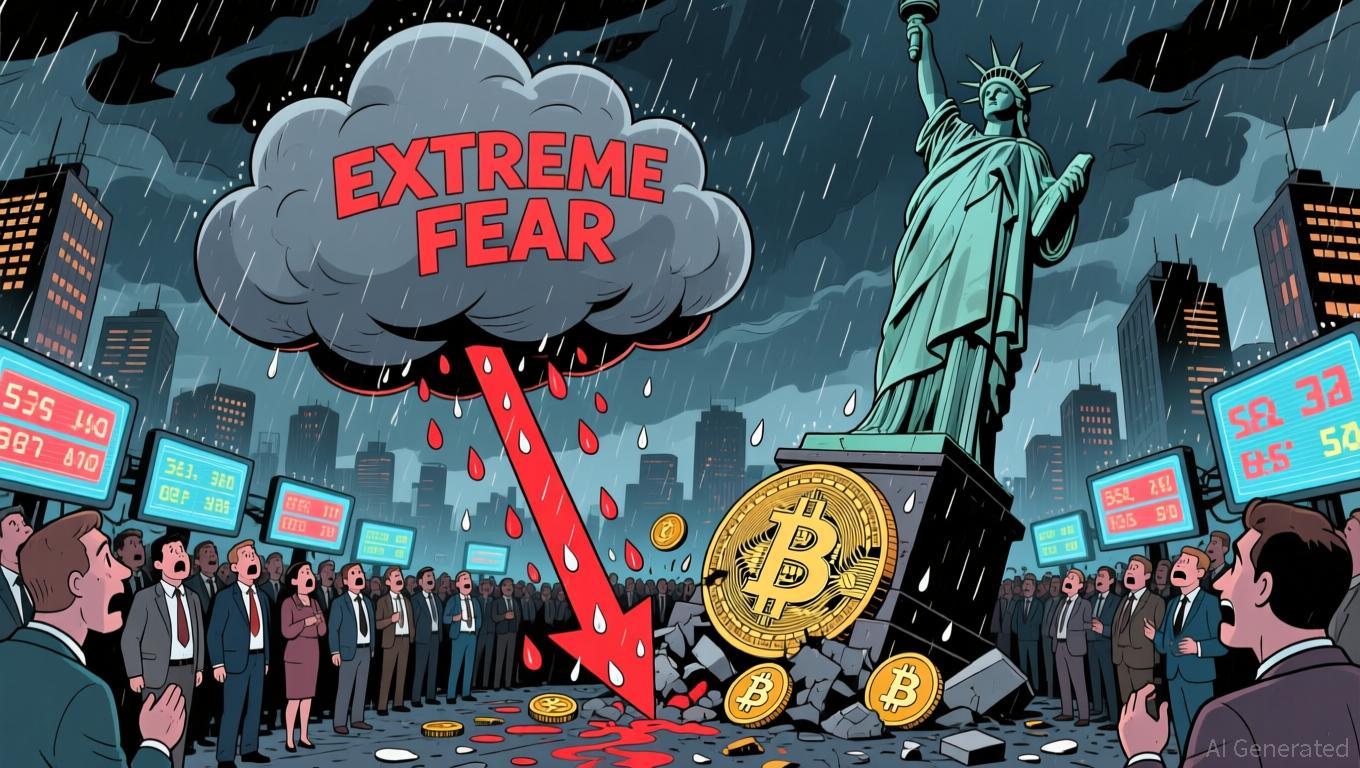Zcash Halving and Its Effects on the Market: Limited Supply, Investor Confidence, and the Value of Privacy
- Zcash's 2025 halving cut block rewards by 50%, driving a 750% price surge to $680 amid growing demand for privacy-focused assets. - Unlike Bitcoin's store-of-value narrative, Zcash's 28% shielded supply via zk-SNARKs created a "privacy premium" during crypto downturns. - Zcash's PoS transition stabilized mining economics, attracting ESG investors while Bitcoin's PoW model faces energy cost volatility. - Institutional adoption (Grayscale Zcash Trust, Zashi wallet) and regulatory resilience position Zcash
Halving events, which reduce miners' block rewards and restrict the supply of new coins, have long fascinated the cryptocurrency community for their impact on prices. Bitcoin’s halvings in 2012, 2016, and 2024 are often cited as prime examples of how engineered scarcity can shape both market sentiment and asset valuation. Now, with Zcash’s halving scheduled for 2025, the privacy-focused altcoin presents a unique opportunity to observe how these supply shocks play out in a different context—one where privacy and utility are central, with potential consequences for both its price path and the broader adoption of blockchain technology.
Scarcity and the Privacy Premium
Zcash’s 2025 halving decreased block rewards from 3.125
Bitcoin’s price rallies after halvings—like the surge to $64,900 in 2020—are often credited to its reputation as a hedge against fiat currency debasement.

Miner Economics: PoW vs. PoS and the Post-Halving Adjustments
Bitcoin’s 2024 halving
Bitcoin’s reliance on PoW remains a double-edged sword: it strengthens network security and scarcity, but also exposes miners to fluctuating energy prices and geopolitical risks. Zcash’s adoption of PoS illustrates how alternative cryptocurrencies can adapt to post-halving realities, potentially offering steadier returns for participants.
Investor Sentiment and the Privacy Narrative
The 2025 halving
Institutional interest has further enhanced Zcash’s reputation. The Grayscale Zcash Trust, with $137 million under management, and
The Road Ahead: Zcash's Position in the Crypto Ecosystem
Following its 2025 halving, Zcash’s market capitalization climbed to $10.63 billion—overtaking Monero—but it still lags far behind Bitcoin’s $1.9 trillion dominance. Bitcoin’s established role as a store of value and its integration into mainstream finance, such as spot ETFs, remain significant hurdles. Nevertheless, Zcash’s emphasis on privacy and enterprise use cases positions it as a valuable addition to a diversified crypto portfolio.
Some analysts, including Arthur Hayes, have speculated that Zcash could eventually reach $10,000, though such predictions are highly uncertain. More realistic goals may involve Zcash maintaining its 28% shielded supply and expanding its institutional partnerships. Regulatory challenges remain, but increasing demand for privacy could make Zcash’s halving a catalyst for renewed interest in privacy-focused blockchains.
Conclusion
Zcash’s 2025 halving highlights the shifting relationship between scarcity, utility, and investor sentiment within the crypto sector. While Bitcoin’s halving cycles offer a blueprint for understanding supply-driven price changes, Zcash’s privacy features and shift to PoS introduce new dynamics. For investors, the main lesson is that scarcity is only part of the equation; a blockchain asset’s value increasingly depends on its ability to solve real-world problems—whether through privacy, scalability, or regulatory compliance. As the digital asset space evolves, Zcash’s halving provides a preview of a future where privacy is not just a niche, but a core asset class.
Disclaimer: The content of this article solely reflects the author's opinion and does not represent the platform in any capacity. This article is not intended to serve as a reference for making investment decisions.
You may also like
Japan Unveils $110B Stimulus: Major Shift from Fiscal Restraint to Economic Expansion and National Security
- Japan's PM Sanae Takaichi unveils $110B stimulus to combat stagnation and bolster security amid China tensions. - Plan includes tax cuts, utility subsidies, defense spending, and strategic investments in AI, semiconductors , and shipbuilding. - Funded by 14-trillion-yen supplementary budget, with potential expansion to 20-trillion-yen ($133B) as per analyst estimates. - Shift from austerity reflects Takaichi's hardline security stance and response to China's travel advisory over Taiwan remarks. - Impleme

Bitcoin News Update: Bitcoin Reaches $96K Amidst Institutional Interest and Challenges from Regulations and Price Barriers
- Bitcoin surged past $96,000 as buyer accumulation and seller exhaustion drove short-term recovery, though $106,000–$118,000 remains a key resistance zone. - Harvard’s $443M investment in BlackRock’s IBIT highlights growing institutional adoption, contrasting traditional preferences for private equity. - Bitcoin Depot reported 20% Q3 revenue growth but faces regulatory challenges, expanding internationally while projecting Q4 declines due to compliance costs. - MicroStrategy’s Michael Saylor denied Bitcoi

Bitcoin News Today: Bitcoin Faces $62K Drop Threat Amid Fed's Data Silence Predicament
- Bitcoin faces $62K crash risk amid Fed uncertainty caused by U.S. government shutdown's "data blackout" disrupting inflation/labor data. - Post-Nov 13 reopening saw BTC rebound above $102K, but markets remain fragile with 20% decline from October peak despite $140B ETF growth. - Fed rate cut odds dropped to 52% for December, creating volatility as institutions like Harvard Endowment invest $443M in Bitcoin ETFs. - U.S. miners struggle with 37.75% global hashrate share amid lack of federal incentives, con

Bitcoin Updates Now: Crypto Faces a Standstill as Market Anxiety Meets Harvard’s Confident Bitcoin Investment
- Alternative Data's Fear & Greed Index hit record low 10 on Nov 16, signaling extreme crypto market fear and frozen investor sentiment. - Bitcoin fell 5% to $96,000 while CD20 lost 5.8% as profit-taking, liquidations, and liquidity declines accelerated selloffs. - Rising U.S. Treasury yields and central bank uncertainty worsened losses, with Nansen noting "perfect storm" of macro risks and institutional outflows. - Harvard's $443M IBIT ETF investment contrasts current bearishness, highlighting diverging i
